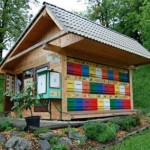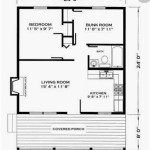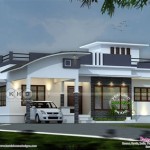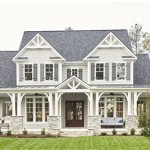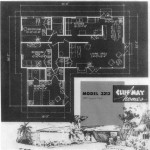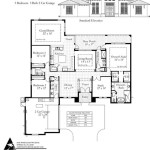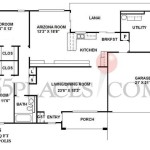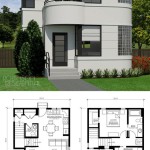Understanding Back Split House Plans: A Comprehensive Guide
Back split house plans represent a unique and often misunderstood architectural style that offers specific advantages, particularly for those seeking a home with distinct levels and spatial separations. This type of design, sometimes referred to as a "split-level" or "bi-level" in certain regional variations, is characterized by staggered floor levels connected by short sets of stairs. This is in contrast to the traditional multi-story home with full flights of stairs between each distinct floor. The back split typically has one section of the home shifted slightly backward from the facade, creating the split-level effect.
Understanding the nuances of back split house plans is crucial for prospective homebuyers, builders, and designers alike. Their distinctive layout impacts everything from natural light and ventilation to functional zoning and potential resale value. This article will delve into the key features, variations, advantages, and potential drawbacks of back split house plans, providing a resource for anyone considering this architectural approach.
Key Features and Variations in Back Split Design
The quintessential element of a back split home is the staggered floor plan. Unlike a conventional two-story house where you ascend a full flight of stairs to reach the second floor, a back split typically has a short set of stairs (often half a flight) leading to the first split level, and then another short set leading to the subsequent level. This creates a series of interconnected spaces that are separated by only a few steps.
A common configuration includes an entry level that opens directly into a living room and dining area. A short flight of stairs might lead up to a bedroom level, while another short flight down could take you to a family room or recreation area, often partially below grade. This below-grade space may or may not include a finished basement depending on the design and local building codes.
Variations in back split designs are abundant. Some variations feature a "side split," where the levels are staggered to the side rather than the back. In other cases, a "four-level split" incorporates an even greater degree of vertical separation, providing more distinct zones within the home. The specific arrangement of rooms and the location of bedrooms, bathrooms, and living areas can also vary greatly depending on the homeowner's preferences and the builder's intentions.
The exterior appearance of a back split house can be deceiving. From the street, it may appear as a single-story or one-and-a-half-story home. However, the staggered levels become more apparent as you move around the side or rear of the property. Roofing lines can be complex, often incorporating multiple gables or hip roofs to accommodate the different levels.
The window placement is also influenced by the layout. Windows on the upper levels may be larger to maximize natural light, while windows on the lower levels might be smaller or even set at ground level. This creates a visual asymmetry that is characteristic of the back split style.
Advantages of Back Split House Plans
Back split house plans offer several distinct advantages that make them an appealing option for certain homebuyers. One of the primary benefits is the built-in zoning of space. The staggered levels naturally create separation between living areas, sleeping areas, and recreational spaces. This can be particularly advantageous for families with children, as it provides a degree of sound isolation and privacy.
For example, the upper level might house the bedrooms, while the main level could encompass the living room, dining room, and kitchen. The lower level could then be dedicated to a family room, home office, or even a guest suite. This arrangement allows each member of the household to have their own space while still maintaining a sense of connection and community.
Another advantage of back split designs is their potential for energy efficiency. The partially below-grade level is naturally cooler in the summer and warmer in the winter, which can help to reduce heating and cooling costs. The layout also allows for effective cross-ventilation, particularly if the home is oriented to capture prevailing breezes.
Back split homes often offer more square footage than a comparable single-story home on the same lot. The staggered levels effectively maximize the usable space without increasing the overall footprint of the building. This can be a significant advantage in areas where land is expensive or where building restrictions limit the size of homes.
Furthermore, back split plans can be adaptable to various lot conditions. The split-level design can be easily adjusted to accommodate sloping or uneven terrain. This can reduce the need for extensive excavation and grading, potentially saving on construction costs. The design also allows for access to the backyard from multiple levels, creating opportunities for outdoor living spaces such as decks and patios.
Resale value can also be a factor, although this varies greatly depending on the location and market trends. Back split homes generally appeal to a specific segment of the population, particularly those who appreciate the unique layout and functional zoning. In some areas, back splits are highly sought after and can command a premium price.
Potential Drawbacks and Considerations
Despite their advantages, back split house plans also have potential drawbacks that should be carefully considered. One of the primary concerns is accessibility. The short flights of stairs between each level can be challenging for individuals with mobility issues, such as the elderly or those with disabilities. While ramps or elevators can be installed, these can be costly and may not be feasible in all situations.
The multiple levels can also create a sense of disconnection between different parts of the home. While the zoning can be advantageous for privacy, it can also limit interaction between family members. For example, someone working in the lower-level office might feel isolated from the activities taking place on the main level.
Heating and cooling can be another challenge in back split homes. Because the different levels are exposed to varying degrees of sunlight and insulation, it can be difficult to maintain a consistent temperature throughout the house. Zoning the HVAC system can help to address this issue, but it may require additional investment.
The aesthetics of back split homes can also be a point of contention. Some people find the staggered levels and asymmetrical facade visually unappealing. The exterior design can sometimes appear dated or unconventional compared to more traditional architectural styles. However, with creative landscaping and modern updates, back split homes can be transformed into stylish and attractive residences.
Renovating or remodeling a back split home can also be more complex than working on a traditional two-story house. The staggered levels and load-bearing walls can limit the possibilities for structural changes. It is important to consult with an experienced architect or contractor before undertaking any major renovations.
Finally, fire safety is another consideration. Because of the vertical separation, smoke can quickly spread throughout the house in the event of a fire. It is essential to install smoke detectors on every level and to have a well-defined escape plan. Educating all members of the household about fire safety procedures is crucial.
Back split house plans represent a unique and efficient approach to residential design. Understanding the advantages and disadvantages, along with the variations in style, is essential for anyone considering this type of home. Careful planning and consideration of individual needs and preferences can ensure that a back split house becomes a comfortable and functional living space.

Back Split Barry S Construction Allenford On

Back Split House Plans Circa 1978 Floor

Plan 1246 Front To Back Split Level Home House Plans

Back Split Barry S Construction Allenford On

The Unique Shapes Of Minto S Back Split Designs In 60s And 70s

The Unique Shapes Of Minto S Back Split Designs In 60s And 70s

The Unique Shapes Of Minto S Back Split Designs In 60s And 70s

Hamilton Backsplit Makeover Martin Design Groupmartin Group

Back Split Barry S Construction Allenford On

Modern Split Level House Plans And Multi Floor Plan Designs

